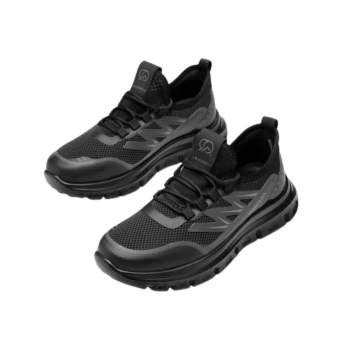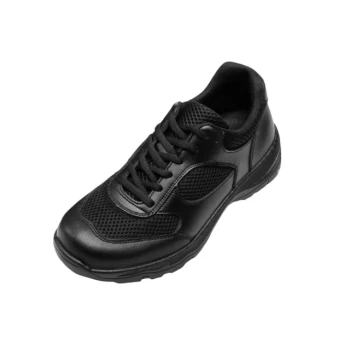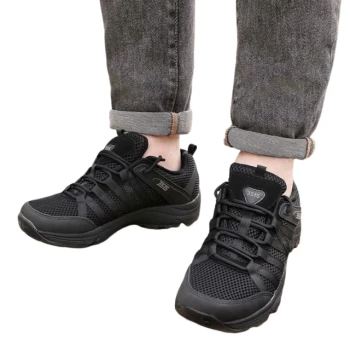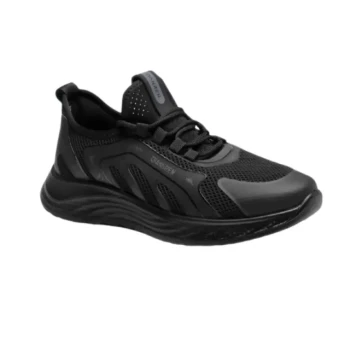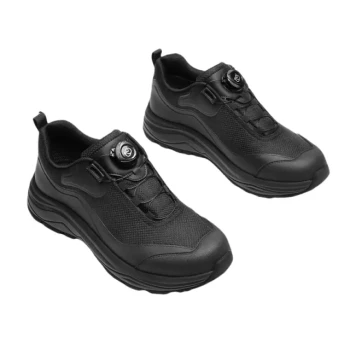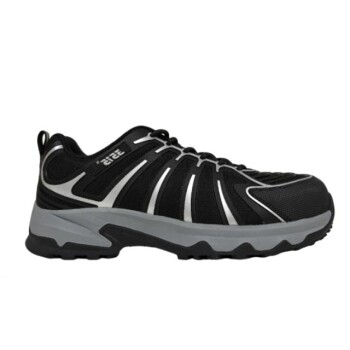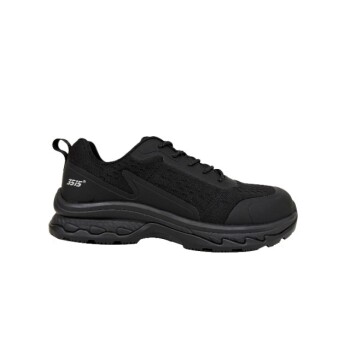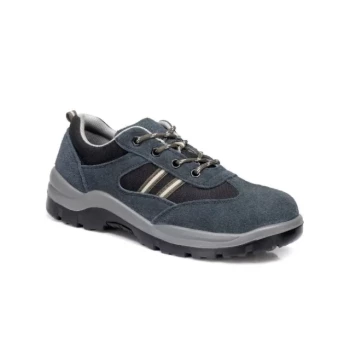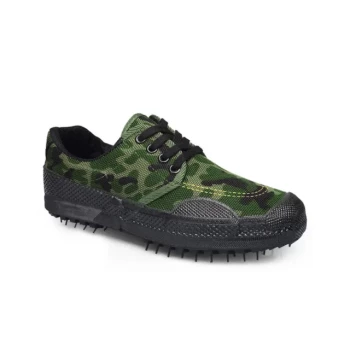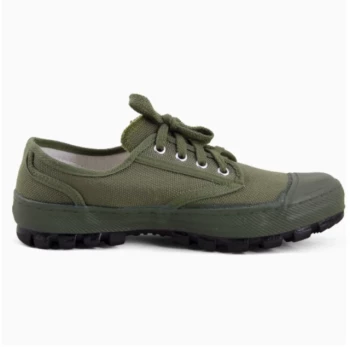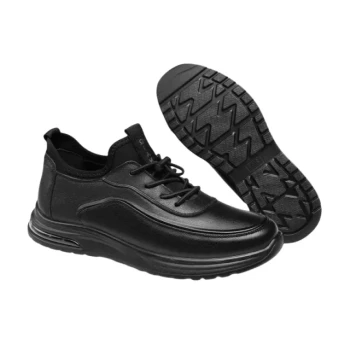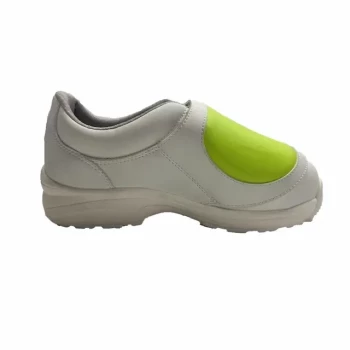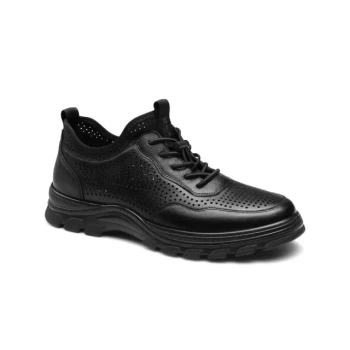Yes, it is perfectly acceptable to buy running shoes for walking. In fact, for all-day comfort and general activity, their superior cushioning and support systems often make them a more comfortable choice than a standard shoe. However, dedicated running and walking shoes are engineered differently to match the specific biomechanics of each activity.
The critical difference is not one of quality, but of purpose. Running shoes are designed to absorb high-impact forces, while walking shoes are built to facilitate a smooth, low-impact rolling motion. Understanding this distinction is key to choosing the right tool for your goal.

The Core Difference: Impact vs. Roll
To understand the shoe, you must first understand the movement. Running and walking place fundamentally different demands on your body and footwear.
Running is a High-Impact Spring
When you run, you are essentially performing a series of small jumps from one foot to the other. There is a "flight phase" where both feet are off the ground.
Each landing generates an impact force equivalent to two or three times your body weight. The primary job of a running shoe is to manage and absorb this repetitive, high-impact shock.
Walking is a Low-Impact Roll
Walking is a much smoother motion. One foot is always in contact with the ground, eliminating the high-impact landing force.
The movement is a gentle, consistent "roll" from the heel, through the midfoot, and off the toe. The primary job of a walking shoe is to provide stability and flexibility to facilitate this natural roll.
How Shoe Design Reflects the Movement
Engineers build shoes to solve the specific problems posed by each activity. This results in distinct differences in cushioning, flexibility, and structure.
Cushioning: Shock Absorption vs. Stability
Running shoes feature significant cushioning in the heel and forefoot to dissipate impact forces. This is essential for protecting your joints during a run.
For walking, this level of cushioning can sometimes feel overly soft or even unstable, as you don't need to absorb the same degree of shock.
Flexibility: The Forefoot Bend
A key feature of a good walking shoe is its flexibility in the forefoot. This allows your foot to roll through the stride naturally and push off from your toes with ease.
Running shoes can be stiffer, as they are often designed to provide a more rigid and propulsive "toe-off" to aid running efficiency.
Durability and Weight
Running shoes are built with highly durable rubber outsoles and reinforced uppers to withstand the abrasion and stress of high-mileage training.
While this makes them very resilient, this level of durability is often overkill for simple walking. Walking shoes use materials suited for lower-impact use, sometimes prioritizing stability and weight over pure abrasion resistance.
Understanding the Trade-offs
Choosing one shoe for the other activity comes with clear consequences, though the risk is not equal in both directions.
The Downside of Walking in Running Shoes
For most people, the trade-offs are minimal. You may find that a highly cushioned running shoe feels a bit less stable, or a stiffer sole doesn't feel as natural as a flexible walker. However, they are generally safe and very comfortable for walking.
The Danger of Running in Walking Shoes
This is a scenario you must avoid. Walking shoes lack the necessary cushioning and support structures to protect your body from the high-impact forces of running.
Using walking shoes for running significantly increases the stress on your feet, ankles, and knees, which can quickly lead to discomfort and injury. Their materials will also break down much faster under the strain.
Making the Right Choice for Your Goal
Select your footwear based on your primary activity to ensure you have the correct support and comfort where it matters most.
- If your primary focus is dedicated fitness walking: A purpose-built walking shoe will offer superior flexibility and a smoother roll for a more natural stride.
- If your primary focus is all-day comfort or general daily activity: A cushioned running shoe is an excellent choice, providing fantastic shock absorption and support.
- If you plan to do any jogging or running at all: You must choose a running shoe. It is the only safe option designed to handle the impact.
Ultimately, choosing the right shoe is about matching its specific engineering to your intended movement.
Summary Table:
| Feature | Running Shoe | Walking Shoe |
|---|---|---|
| Primary Purpose | Absorb high-impact forces | Facilitate a smooth rolling motion |
| Cushioning | Heavy, for shock absorption | Moderate, for stability |
| Flexibility | Stiffer, for propulsion | Flexible in the forefoot |
| Best For | Running, jogging, all-day comfort | Dedicated fitness walking |
Need the Perfect Shoe for Your Needs?
As a large-scale manufacturer, 3515 produces a comprehensive range of high-performance footwear for distributors, brand owners, and bulk clients. Whether you need durable running shoes with superior cushioning or flexible walking shoes designed for a natural stride, our production capabilities cover all types of shoes and boots to meet your specific market demands.
Let us help you equip your customers with the right tool for their activity.
Contact our experts today to discuss your footwear requirements and discover how we can bring value to your business.
Visual Guide
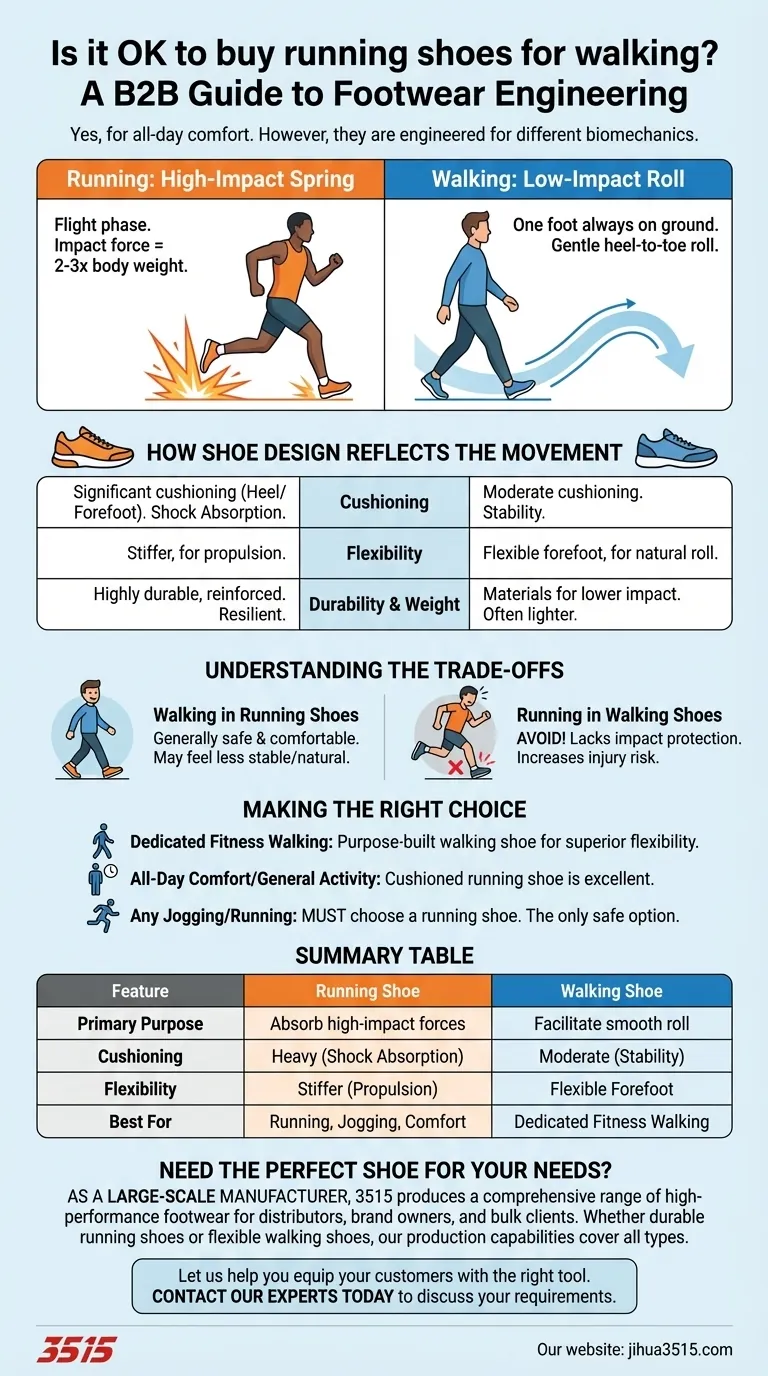
Related Products
- Wholesale Lightweight Cushioned Athletic Sneakers for Custom Bulk Production
- Wholesale Breathable Training Shoes Custom Athletic Footwear Manufacturer
- Wholesale Durable & Breathable Training Shoes for Custom Brands
- Lightweight Breathable Training Shoes for Wholesale & Custom OEM Manufacturing
- Wholesale Breathable & Cushioned Training Shoes Custom Factory Production
People Also Ask
- Is it advisable to run in walking shoes? Avoid Injury with the Right Footwear
- How do non-slip athletic shoes differ from regular athletic shoes? Discover the Grip Technology
- How does the sole design differ between walking and running shoes? Optimize Comfort and Performance
- How does the foot strike differ between walking and running? Master the Mechanics for Better Footwear
- What is the final recommendation for choosing between walking and running shoes? Optimize Comfort and Performance
